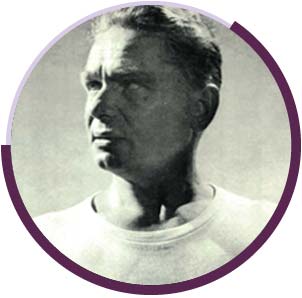History of Pilates
Joseph Humbertus Pilates was born in Germany, a sickly child who suffered from asthma, rheumatic fever and rickets. Determined to conquer his debilities and improve his physical condition, he went on to become an accomplished gymnast, skier, boxer, body builder, competitive swimmer and self-defence trainer.
Taking a keen interest in karate and yoga, he combined Eastern and Western exercise disciplines to establish the mind-body concept that lies at the heart of the Pilates system. Ancient Greek philosophy also served as an inspiration.
Interned in a prisoner of war camp during World War 1, Pilates helped guards and prisoners to maintain fitness. Using his bunk, bedsprings and chair, he improvised the creation of the apparatus that was to become the Reformer, Trapezium (pictured above) and Wunda chair still found in Pilates studios today. During this period a devastating influenza epidemic spread across the globe, claiming 50 million lives. Miraculously, there were no influenza casualties in Pilates’ camp, a fact attributed directly to the fitness of the men.
The British army then employed Pilates to assist in training the British troops. After the war, he emigrated to the United States where he and his wife, Clara, set up the first Pilates studio in New York in 1926.
The famous Russian choreographer, George Ballanchine of the New York City Ballet, was soon sending his dancers to Pilates’ classes. The dance pieces known as the ‘[Seven Deadly Sins’, choreographed by Ballanchine, incorporated the Pilates mat routine. American, Martha Graham, doyenne of 20th century modern dance, also studied with Pilates, drawing on his movements in the development of the Graham technique.
Joseph Pilates passed away at the age of 87 in 1967, but left a powerful legacy that will continue to benefit many people for years to come.

